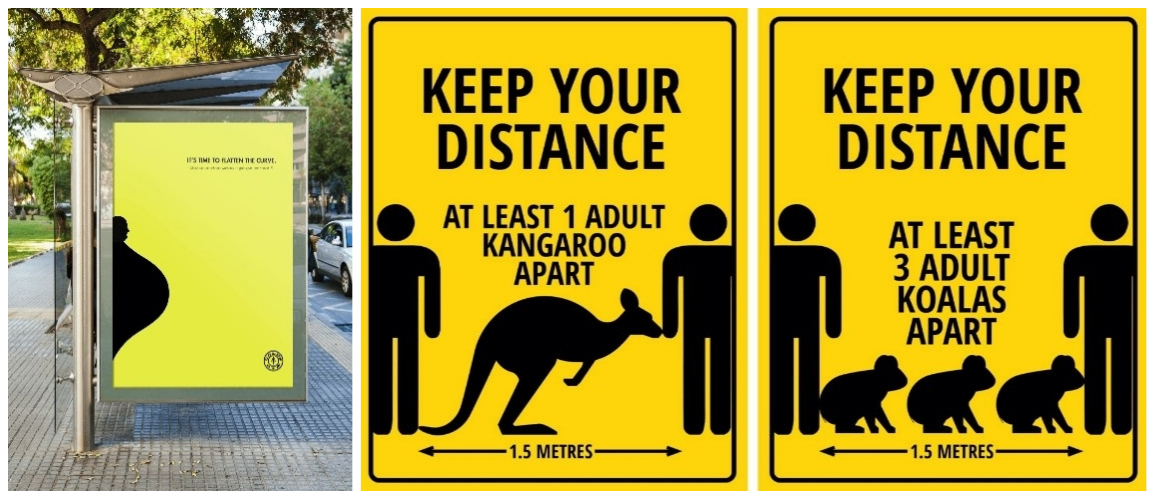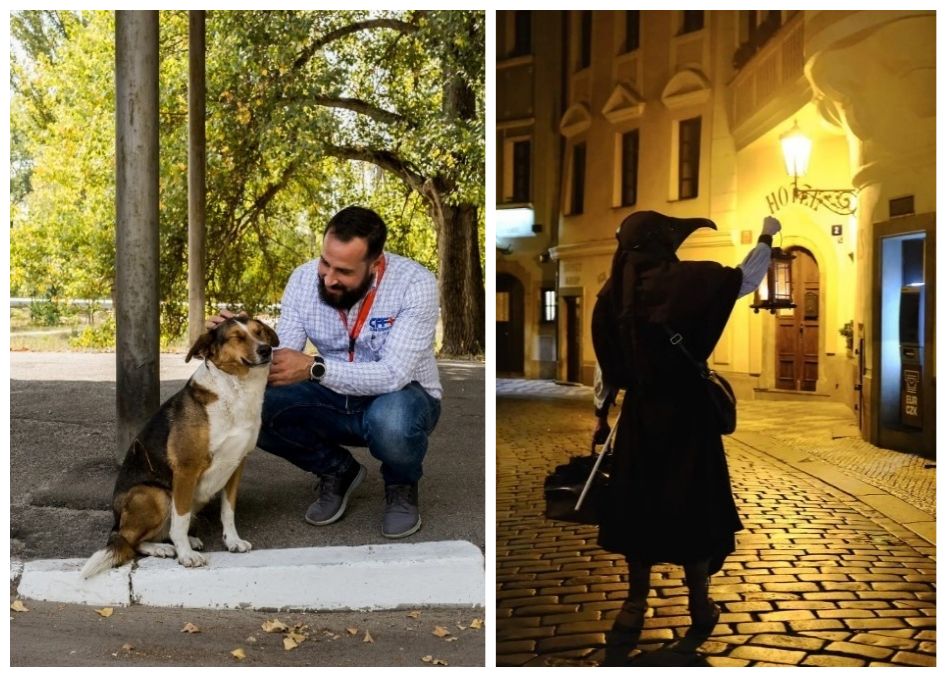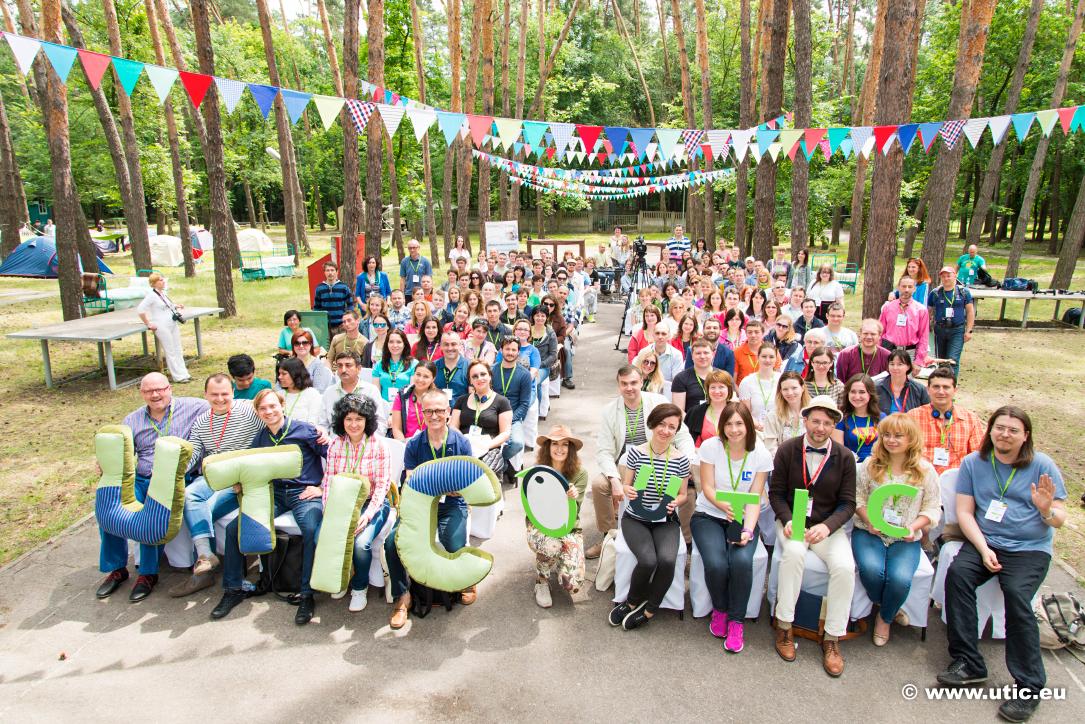

Orson Welles’ words about limitations breeding creativity has never felt more relevant than during lockdown. COVID-19 outbreak started one of the most creative periods for marketing in a long time. The biggest health crisis in 100 years was marked by a mass pouring of memes and general silliness. How can you be serious anyway if everybody you talk with is in their pajamas?
Now, in the New Normal, let us look back at the most interesting marketing trends we have witnessed this year and predict what is going to stay.
Back in March, when the markets were falling, mass disinformation was ruling media and your own Facebook feed, one of the biggest don’ts that everyone was trying to avoid was to appear unsensitive. There was an immediate shift from traditional sales pitches to focus on community, giving back to society (even if it meant recycling old content), well-being and sustainability (despite filling oceans with more disposable masks than jelly fish). To the point that it was not the concerned tone of “hope you and your loved ones are safe” that was getting noticed, but rather the old drip campaigns that someone in marketing forgot to turn off. Like those emails from Sky TV informing their subscribers about streaming hundreds of live events at the time when governments managed to shut the borders and your own company sent everyone to work from home within 24h.
Is this going to stay? The events this year, from the COVID-19 crisis, fires, Black Lives Matter movement, protests in Belarus and Poland shone an incredibly harsh light on a range of sustainability challenges and exposed weaknesses and inequality in every society. It initiated more discussions about sustainability, well-being, inclusion, diversity, and human rights than ever before. One of the trends that we can see emerge victorious is green marketing, a practice of developing and advertising products based on their environmental sustainability. Research confirms that today the majority of consumers shop with their values, demand ethical products, and believe that companies have a responsibility to positively impact society. Even Jack Welch, the famous CEO of GE who thought that global warming was a "mass neurosis" and an attack on capitalism, advised to embrace green ways of doing business, "whether you believe in global warming or not ... because the world wants these products".
We have seen those before, but rarely. For real time marketing to work it must be based on an event significant enough for everyone to notice, and when done well, it gets viral quickly. One of the best real time marketing ads was Norwegian Airline promoting cheap flights to L.A. after the Brangelina break-up.

Another great example of real time marketing was from my native Poland. The campaign #EatApples against Putin started with the Russian embargo on exported produce imposed on Poland for supporting Ukraine in 2014. The entire country was posting selfies while eating apples in the act of solidarity with Polish producers, the employers were buying kilograms of apples for their offices and we could spot them on TV when watching any talk show. But a long-lasting effect of this social campaign is the popularity of a completely new product. The very creative team of Cydr Lubelski, a new brand at the time, with almost no budget, managed to make of cider a new popular alcohol in the country of vodka, beer and home-made liquors thanks to #DrinkApplesAgainstPutin campaign on social media.

Credit: The Guardian. Warsaw bar owner Jozef Czarnocki bites an apple and holds a bottle of cider to show his support for the campaign against Russia’s ban. Photograph: Wojtek Radwanski/AFP/Getty Images
This year, however, we were delighted by a surge of witty campaigns, and we are grateful for this moment of respite. Some of my favorite examples include:
The Ministry of Culture and Information Policy of Ukraine using famous pieces of art to talk about safety measures
 Credits: Behance
Credits: Behance
“Le Whopper de la Quarantaine" by Burger King in Paris

Credit: TheDrum.com
Australian ads: Signing up for a gym to flatten the curve and keeping the distance of 1 kangaroo apart

Credits: AdsoftheWorld.com
Nike’s “Just don’t do it” and famous brands distancing their logos

Credits: cnn.com
M&C Saatch for Mother's Day in the U.K.

Credits: marcommnews.com
Conference call chic” by T.M. Lewin

Credits: T.M. Lewin newsletter
DIY instructions from IKEA

Credits: digitalagencynetwork.com
Is this going to stay? We hope that the creativity and sense of humor of the COVID campaigns will become the new normal, same as leggings, taking a victory lap thanks to coronavirus.
If you thought that organizing a webinar was a great idea, you were right, until Salesforce started their “Leading Change” webinar series and invited celebrities and the CEOs of the likes of Starbucks and BT. How can you get noticed now with your own webinar and compete with Salesforce? Some of the most successful ideas that I have seen included:

Online experiences, such as the Airbnb events made famous thanks to an article in the New York Times. Some of them, especially the walk in Chernobyl with stray dogs or with a plague doctor in an empty Prague at night, were sold out for weeks, becoming the only thriving part of Airbnb business, seriously damaged by travel bans.

Credit: Airbnb. Chernobyl Experience and Prague Experience campaigns
Artistic gems like the Swan Lake by Tchaikovsky performed by 27 ballet dancers in their bath tabs with striking beauty, complexity and humor.
Is this going to stay? During the phased period of reopening this past summer, we could all see around us that some attractions would not be back for a long time. Some renowned institutions, like the Metropolitan Opera in New York, cancelled their entire 2020-2021 season. Attending an event in person will become a luxury with less money in the system, more expensive flights due to airline bankruptcies, less people willing to travel either due to health concerns or the realization that face-to-face contact is not always needed.
The shift to virtual experiences, however, brought some change for the better, for two reasons. First, online access to content and experiences makes it more democratic and universal. Thanks to all the major museums, universities, theatres, and conferences in the world sharing their content online, it made it available to those who might have never had a chance to participate in it in person. The mix of in person meetings and online access will be beneficial for the localization industry as well, as it will make it available to a much wider audience. The shift to online resulted also in another major change – more acceptance for poor quality videos and recorded webinars which makes is much quicker and cheaper to produce. The shiny video ads are in the past.
Despite everything that has been happening around us in 2020, it was an incredible year for marketing. It also highlighted ineffective strategies and tactics that are being weeded out.
Print, outdoor ads, TV advertising, expensive social media ads are not as effective anymore. So what's left?
In the 2020 survey conducted by the leading industry associations, EUATC, GALA and ELIA, the respondents chose search engine optimization (SEO), events, online ads, and social media campaigns as the best performing marketing channels. In my opinion, we should also include in this list email marketing programs. Let us analyse some of those channels.

Credit: Sabina Jasinska Presentation for UTICamp-2020
With Google getting smarter and more powerful all the time, it is not enough to create a great website and hope that visitors will come. You must put in some serious work to attract your audience.
I would like to invite you to see SEO at work. Try two searches: a branded and a non-branded one. In the first one, look for a specific brand, for example Tesla. You will see some ads, an automatically created knowledge panel with Tesla’s Wikipedia profile, a Google map with local distributors, a carousel with latest news about Elon Musk and Tesla’s share price, and then articles or other pages ranked by their popularity. For your own brand to appear in all those places, remember to update various directories as well as validate your Google profile with your contact details and opening hours.
The organic search is non-branded – it is for example looking for "translation", "transcreation in Ukraine" or “interpreters in Kiev”. To see how it works, try different sections: images, news, as well as the most frequently asked questions. This should help you decide what to write and how to phrase it on your page.
One of the best practices to apply when writing your website content is keyword research – and there is an abundance of tools, also free, that will help you with this task. Avoid jargon, such as "LSP", "DTP", or even "transcreation” that potentially not many people outside of the industry understand. Phrase your text as a question, such as "How can I translate it into Ukrainian?" instead of "translation into Ukrainian". Make sure your content is unique and error free – Google penalizes you in case of duplications, plagiarism, or grammar mistakes.

Credit: Sabina Jasinska Presentation for UTICamp-2020
Finally, remember that your website is not a brochure where you can include all the keywords, tons of content and hope for the best. In 2021, there will be a major shift in Google algorithms that will reward or penalize your page based on the user experience. At the end, your website should help the searcher.
You have heard it already – email marketing is dead and it is time for social media. However, the statistics show quite the opposite. We only see 2% of posts of the companies we follow on LinkedIn or Facebook, but over 90% of emails reach the intended mailbox. One euro spent on email marketing brings back almost 40 euros. It gives 66% more conversion than any other channel, is 40% more effective than social media, and the value of converted business is 3 times higher. This is due to two factors: first, each time your open your LinkedIn or Facebook feed, there are thousands of messages competing for your attention and platforms limit the reach on purpose to encourage firms to sponsor ads. Second, your target audience is paid to check their work email, not their Facebook or LinkedIn.

Credit: Sabina Jasinska Presentation for UTICamp-2020
The fact that email marketing remains the #1 tool for attracting and retaining customers has been proved again in 2020, when companies had to redirect their communications to email after events were cancelled. It was the the quickest channel enabling them to react to market conditions, address customer concerns and reassure investors. In the report published in May by my company, StoneShot, specialized in email marketing, we analysed some interesting insights from millions of emails sent globally by our clients during the first lockdown. We observed that all our clients increased their communication from once per month or once per quarter to multiple times per week. Despite this increase, engagement remained high with record-breaking open rates (up to 88%) enabling firms to win additional business during the pandemic. Surprisingly, the opt-out were also going down despite a six-fold increase in contacts being emailed.
If email marketing is not dead, some bad practices are, such as not personalizing your messages, violating GDPR and not tracking engagement. Please find below some of the best tips that I have learnt when working for StoneShot.
#1 Personalization
High personalization gives you 120% better impact on revenue than generic emails. With manual work, you are losing time and money overall.
For your email to get the attention of the reader, use smaller and more targeted distribution lists, and do not send the same message to all. Messaging should be segmented around buyer personas (people who buy from you). Think about adapting your message according to their role, responsibilities, goals, challenges, needs, and interests.

Credit: Sabina Jasinska Presentation for UTICamp-2020
It all sounds like a lot of hustle but it can all be orchestrated with the right technology.
#2 Crafting your content
The first rule is keeping it short. Place the key information in your message and important links in the top left corner. If the text cannot be condensed, link it to a landing page.

Credit: Sabina Jasinska Presentation for UTICamp-2020
The best performing messages are also simple and with an engaging subject line. In the image below you will find some tips on creating a subject line that compels people to open.#3 Automation and analytics

Credit: Sabina Jasinska Presentation for UTICamp-2020
With so much effort put into your email marketing program, you should monitor it closely to reap the intended results. More advanced email marketing tools will show you opens and clicks as well as how your emails contribute to the web traffic. They will track individual activity for each contact whether it is on email, website or clicking on specific links. If you are serious about your digital marketing program, you should invest in a tool that offers you full visibility.

Credit: Sabina Jasinska Presentation for UTICamp-2020
Another best performing channel chose by the EUATC, GALA and ELIA survey respondents are client and industry events. However, due to the important investment needed for travel, attendee tickets and booth sponsorship, it requires more creativity than just showing up. From my experience, I would always recommend participating in call for papers. It offers additional networking opportunities, and nothing gets you noticed more than your speaker badge.
And with that in mind, I would like to invite you to speak at the next UTICamp conference and submit your call for papers before end of January 2021. Please find all the instructions on the UTICamp website on how to apply.
Hope to see you all there!
